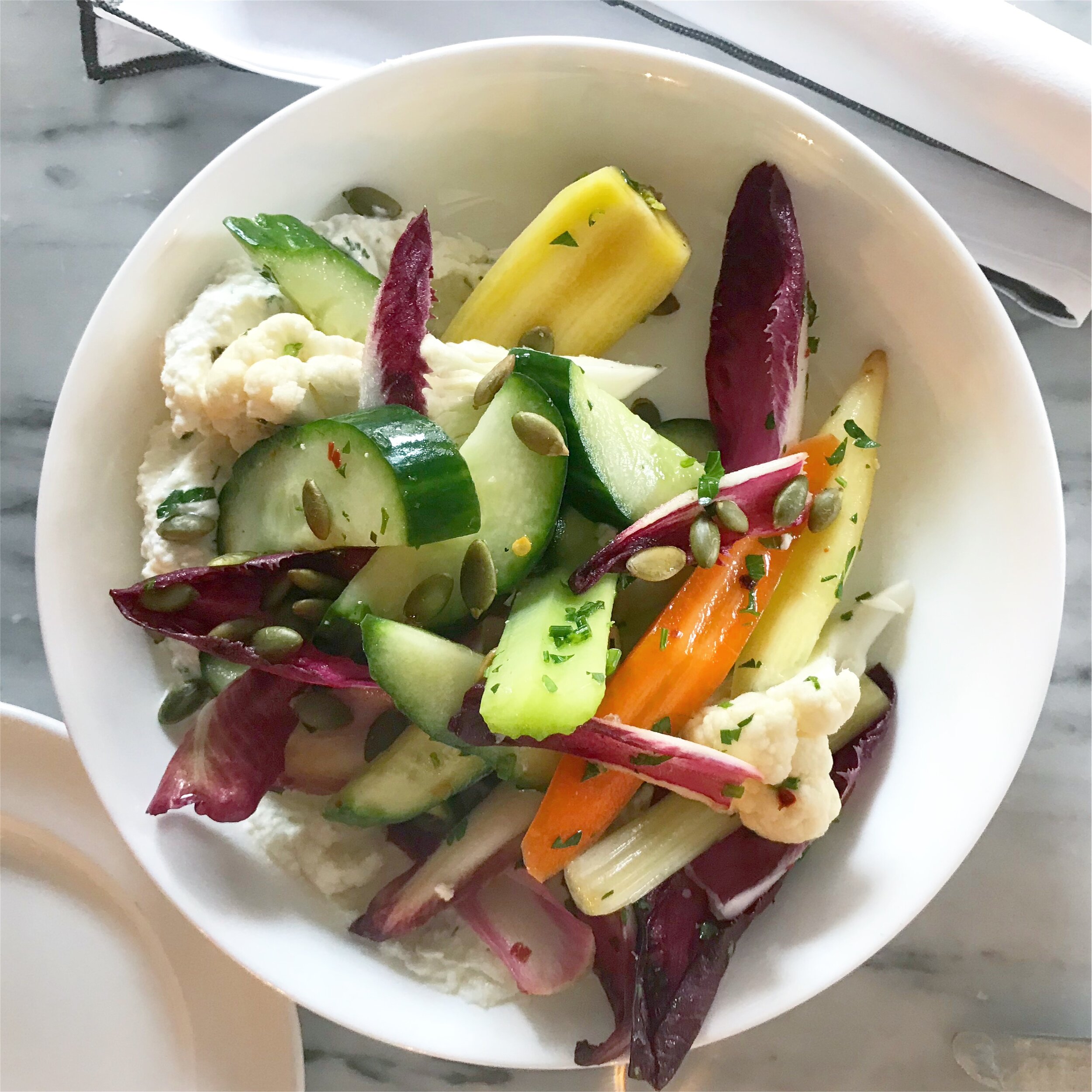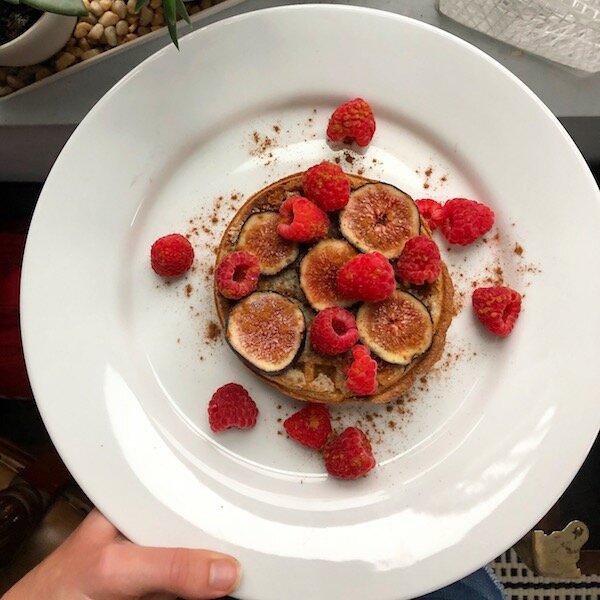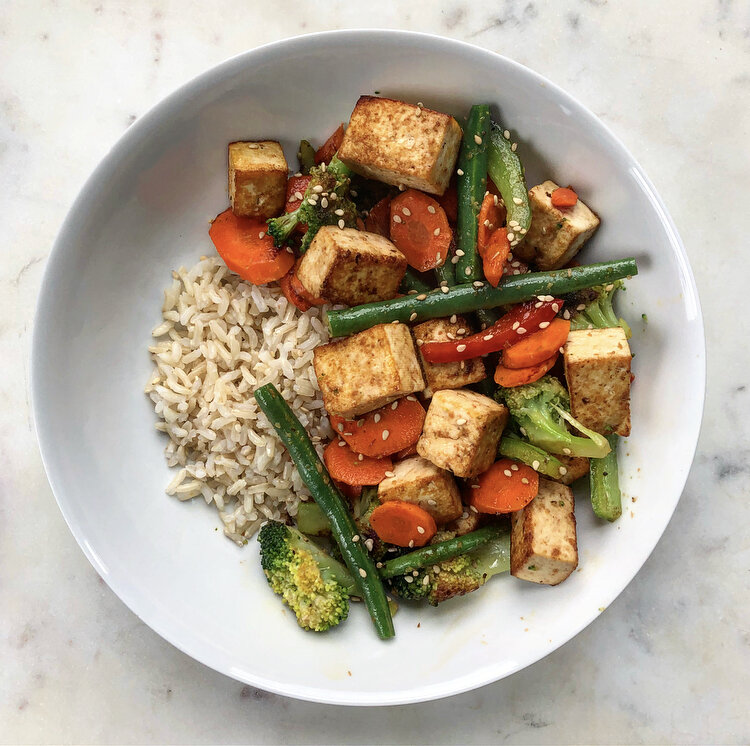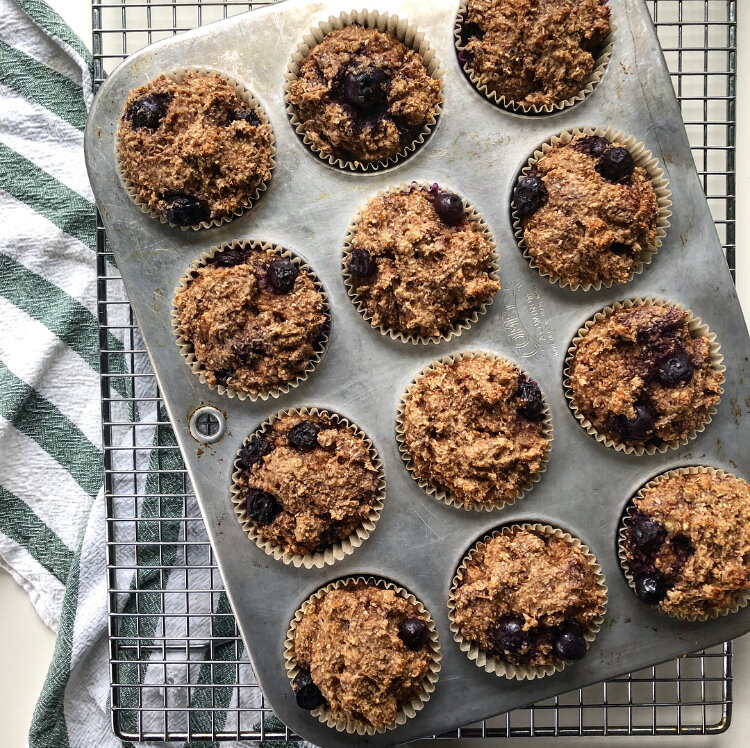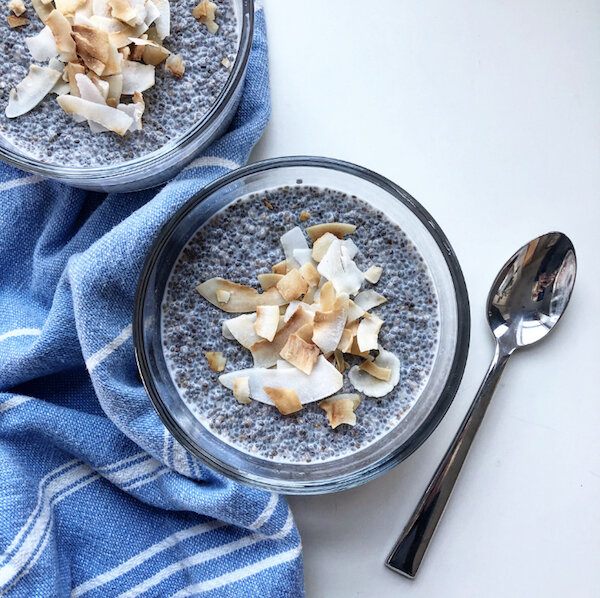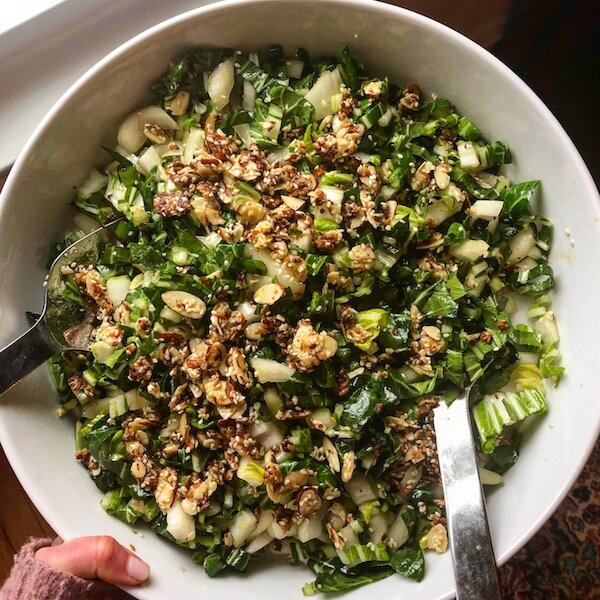Fiber 101
Fiber is the non-digestible part of plant foods and can be found in whole grains, fruit, vegetables, legumes, nuts and seeds. Most people know fiber improves digestive health and regularity, but other health benefits associated with consuming dietary fiber are also well documented. Unfortunately, most Americans don’t meet the recommendations for fiber intake, which is why it’s important to me that my clients are well educated on fiber as well as easy ways to include more high-fiber foods in their diet – even if they avoid FODMAPs!
HOW DOES FIBER CONTRIBUTE TO DIGESTIVE HEALTH?
There are two types of fiber and both help with digestive health and regularity:
Soluble fiber dissolves in water and gels in the gut. This helps to keep things moving, but can also slow down a fast-moving system helping to reduce frequent bowel movements and diarrhea in those with Irritable Bowel Syndrome (IBS). Some soluble fiber sources that are also low in FODMAPs include bananas, citrus fruits, kiwi, sweet potato, broccoli, carrots, oats, quinoa, and chia seeds.
Insoluble fiber is what really moves things through the digestive tract by adding bulk. This can benefit those who experience constipation, straining and infrequent bowel movements. Foods with insoluble fiber that are also low in FODMAPs include strawberries, green beans, spinach, kale, potato skin, popcorn, walnuts, and pecans.
If you aren’t sensitive to FODMAPs or are comfortable with your dietary triggers, other high fiber foods include wheat, raspberries, apples, pears, Brussels sprouts, beans and peas!
WHAT ARE OTHER BENEFITS OF INCLUDING FIBER IN YOUR DIET?
In addition to improving digestive health and regularity, some of the other health benefits associated with increasing your intake of dietary fiber include:
Lower blood pressure and cholesterol levels
Improvement in the presence of glucose in the blood and insulin sensitivity
Enhanced weight loss and maintenance
Symptom improvement in gastrointestinal illnesses including GERD, diverticulitis, constipation, and hemorrhoids
SO, HOW MUCH FIBER DO YOU NEED?
According to the Dietary Guidelines for Americans, the recommendations for fiber intake are as follows:
Females (19-30): 28 g/day
Males (19-30): 34 g/day
Females (31-50): 25 g/day
Males (31-50): 31 g/day
Females (51+): 22 g/day
Males (51+): 28 g/day
Fiber intake should be increased gradually along with your intake of water, which will help fiber do it’s job in the gut. From there, finding the right balance of soluble vs. insoluble fiber is individualized, but a dietitian can help with what’s best for you!
HOW CAN YOU INCREASE YOUR FIBER INTAKE ON A LOW FODMAP DIET?
As I mentioned before, many commonly consumed high fiber foods are also high in FODMAPs, which is why many people who see symptom reduction by following a low FODMAP diet find it hard to meet their fiber needs. However, it doesn’t have to be! There are plenty of foods that contain fiber and are low in FODMAPs, and many high FODMAP foods have smaller, more tolerable portions that are also good for getting fiber in the diet. Here are some things to try if you follow a low FODMAP diet:
Start at breakfast. Add chia seeds to a smoothie or overnight oats, add veggies to egg dishes, or add an oat bran muffin to your morning routine. Chia pudding is another great option for a high fiber morning meal.
Choose whole grains. Even if you avoid wheat, you can include whole grains in a low FODMAP diet. Oats, quinoa, brown rice and buckwheat are all whole grains that are also low in FODMAPs.
Swap your snacks. Choose Flackers crackers over other wheat-free options that are lower in fiber, or add a higher fiber fruit like kiwi or a half cup of berries to something protein packed like Greek yogurt, a hard boiled egg or a cheese stick. Popcorn is another great option!
Don’t forget about plant-based proteins! As with most foods consumed as part of a low FODMAP diet, it’s all about portions, and many high-quality plant proteins can be consumed without digestive upset.
WHAT IF YOU NEED A LITTLE MORE HELP MEETING YOUR FIBER NEEDS?
For clients that ask about a fiber supplement, my recommendation is Regular Girl, a blend of prebiotic soluble fiber (Sunfiber) and probiotics (B. Lactis) that can help with regularity without excess gas or bloating. As you know, I don’t recommend anything that I haven’t tried and enjoyed myself, and my favorite part about this product is that it is virtually tasteless in water, which means you can easily add it to your day while working toward your water goals! The on-the-go stick packs are a must-have when I travel.
If you want to give it a try, they give my clients 10% off their first order with the code FEED10.
**Disclaimer: This post contains affiliate links, meaning, at no cost to you, I will earn a small commission if you click through and make a purchase.

